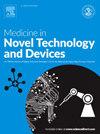Effects of geometrical parameters on hemodynamics of arteriovenous graft: A 3D numerical simulation
Q3 Medicine
引用次数: 0
Abstract
Although arteriovenous grafts (AVGs) serve as a significant long-term hemodialysis access, they encounter issues such as stenosis, thrombosis, and potential graft failure. This study utilizes computational fluid dynamics to examine various combinations of geometric parameters in AVG design. Twelve looped AVG configurations are generated, including two representing commercially available AVGs. These models vary in length (60 mm and 150 mm), diameter (4 mm, 5 mm, and 6 mm), and venous anastomosis (VA) angles (30° and 60°). A time-dependent velocity waveform is applied at the artery inlet, with rigid walls and non-Newtonian blood modeling. AVG performance is assessed using velocity, streamlines, graft flow, and wall shear stress metrics, such as time-averaged wall shear stress, oscillatory shear index, and relative residence time. Comparative analysis identifies an AVG with a 60 mm length, 5 mm diameter, and 30° VA angle as a promising alternative to conventional graft configurations. This model demonstrates approximately 50 % less exposure to unfavorable hemodynamics, with a marginal decrease of around 9 % in maximum graft flow compared to commercial models. Shorter graft lengths, smaller diameters, and relatively smaller VA angles contribute to improved hemodynamic distribution. These findings offer insights applicable to clinical research on arteriovenous grafts and aid in developing effective therapeutic strategies.
几何参数对动静脉移植物血流动力学的影响:三维数值模拟
虽然动静脉移植物(AVGs)作为一种重要的长期血液透析途径,但它们遇到诸如狭窄,血栓形成和潜在的移植物失败等问题。本研究利用计算流体力学来检验AVG设计中几何参数的各种组合。生成12个环路AVG配置,其中2个代表市售AVG。这些模型在长度(60mm和150mm),直径(4mm, 5mm和6mm)和静脉吻合(VA)角度(30°和60°)上有所不同。在动脉入口处应用时间相关的速度波形,具有刚性壁和非牛顿血液模型。通过速度、流线、接枝流量和壁剪应力指标(如时间平均壁剪应力、振荡剪切指数和相对停留时间)来评估AVG的性能。对比分析表明,长度为60mm、直径为5mm、VA角为30°的AVG是传统接枝结构的理想选择。该模型显示,与商业模型相比,对不利血流动力学的暴露减少了约50%,最大移植物流量减少了约9%。较短的移植物长度,较小的直径和相对较小的VA角有助于改善血流动力学分布。这些发现为动静脉移植的临床研究提供了新的见解,并有助于制定有效的治疗策略。
本文章由计算机程序翻译,如有差异,请以英文原文为准。
求助全文
约1分钟内获得全文
求助全文
来源期刊

Medicine in Novel Technology and Devices
Medicine-Medicine (miscellaneous)
CiteScore
3.00
自引率
0.00%
发文量
74
审稿时长
64 days
 求助内容:
求助内容: 应助结果提醒方式:
应助结果提醒方式:


